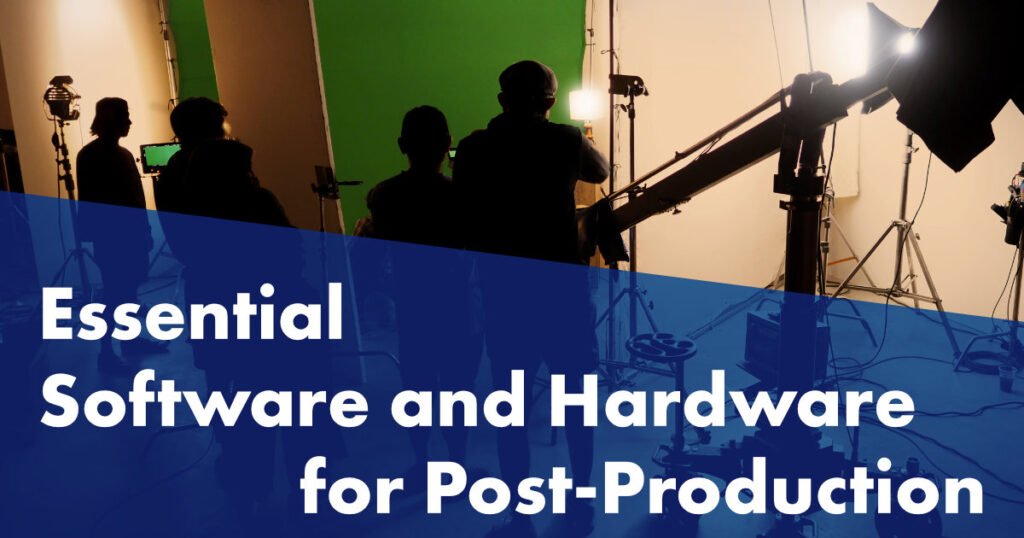Essential Software and Hardware for Post-Production


Navigating the world of post-production demands familiarity with both cutting-edge software and robust hardware, tailored to the project’s scale, whether it’s commercial, film, or online content. This dual focus ensures that professionals can handle the complexities of editing, color grading, visual effects, and sound design efficiently.
Software: The Core of Post-Production
- Non-Linear Editing Systems (NLEs): Adobe Premiere Pro, Avid Media Composer, and Final Cut Pro X are staples in the industry. Premiere Pro is celebrated for its Adobe Creative Cloud integration, Avid for its strength in collaborative settings, and Final Cut Pro X for its quick, efficient performance on Mac systems. Notably, DaVinci Resolve has gained traction as an all-in-one NLE, offering robust editing capabilities alongside its superior color grading tools.
- Visual Effects and Motion Graphics: After Effects stands tall for motion graphics, with its seamless Adobe product integration. Node-based compositing software like DaVinci Resolve Fusion and Nuke are preferred for intricate visual effects, offering advanced functionalities.
- Color Grading: DaVinci Resolve shines in color correction and grading, widely adopted for its sophisticated toolset that caters to both commercial and cinematic projects.
- Audio Post-Production: Pro Tools remains the benchmark for audio editing, encompassing extensive mixing and sound design capabilities. Adobe Audition is a solid choice within the Adobe ecosystem, offering integration with Premiere Pro.
- 3D Modeling and Animation: Cinema 4D and Autodesk Maya are the top choices for 3D content. Cinema 4D’s user-friendly interface and After Effects integration make it accessible, while Maya is renowned for advanced character modeling and animation features.
Hardware: The Backbone of Efficiency
- Workstations: High-performance workstations are critical. Brands like HP and Dell offer specialized video editing and VFX workstations, while custom-built PCs with advanced CPUs, ample RAM, and SSD storage are also popular.
- Graphics Processing Units (GPUs): Essential for rendering and playback, NVIDIA and AMD lead with products like NVIDIA’s Quadro and GeForce series, and AMD’s Radeon Pro.
- Monitors: For color grading, monitors from EIZO and Dell are preferred for their color accuracy and consistency.
- Storage Solutions: Handling large video files requires reliable storage, with NAS systems from Synology and QNAP offering scalability and remote access.
- Audio Equipment: Accurate audio monitoring is key, with high-quality speakers and headphones from brands like Genelec and Sennheiser.
Staying abreast of advancements in post-production software and hardware is essential. For those interested in a more detailed comparison of top software tools, particularly exploring the growing adoption of DaVinci Resolve as an all-encompassing NLE solution, a deep dive into their functionalities and use cases across different scales of projects could provide invaluable insights. This examination is especially pertinent as the industry shifts towards more integrated and versatile platforms.

Responses